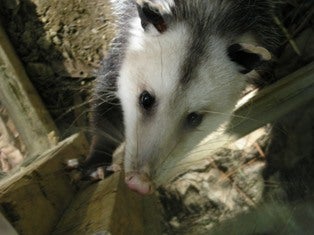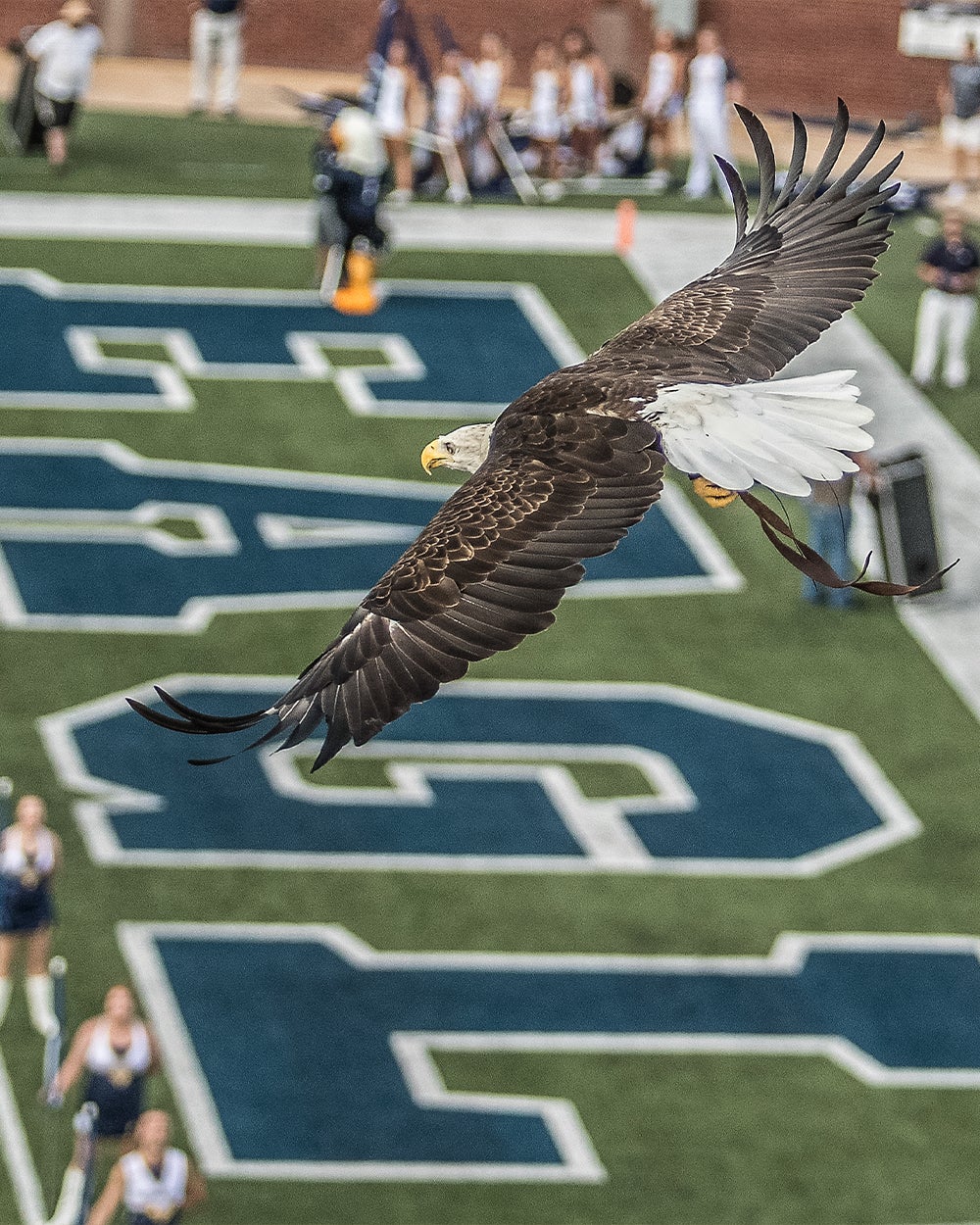Bald Eagles
The Bald Eagle owes its name to the Middle English term “balde,” meaning “white.” It does not mean “hairless” or “lack of feathers.” Juvenile Bald Eagles do not have white heads, tails or yellow beaks and eyes. Around three years of age they will start to develop these characteristics as they transition into a mature bird at the age of five. The Bald Eagle has a wingspan of 6 to 8 feet and makes its habitat along coastlines or large bodies of fresh water. Eagles require a 25 square mile hunting territory and appear to mate for life (which can approach 40-50 years).
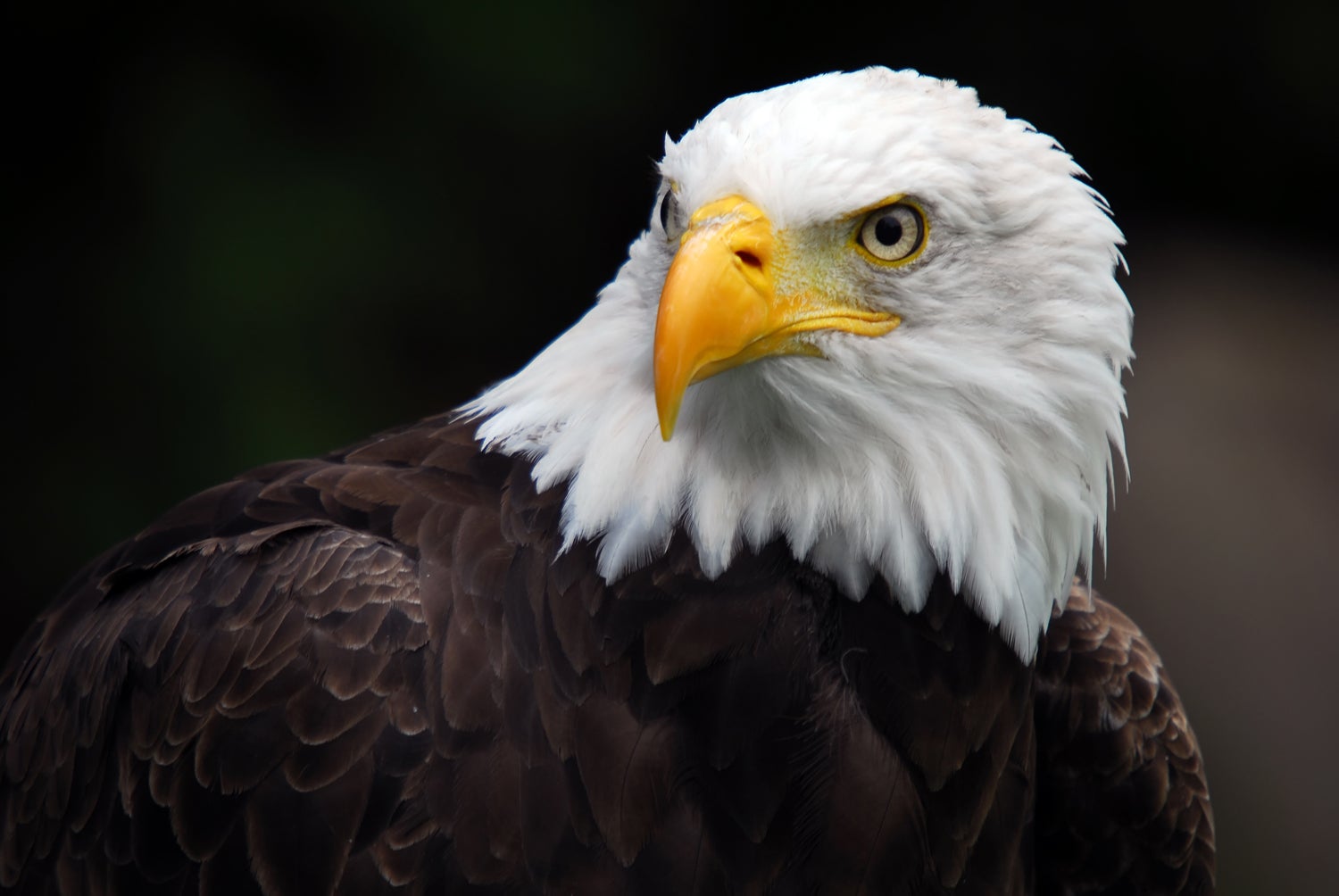
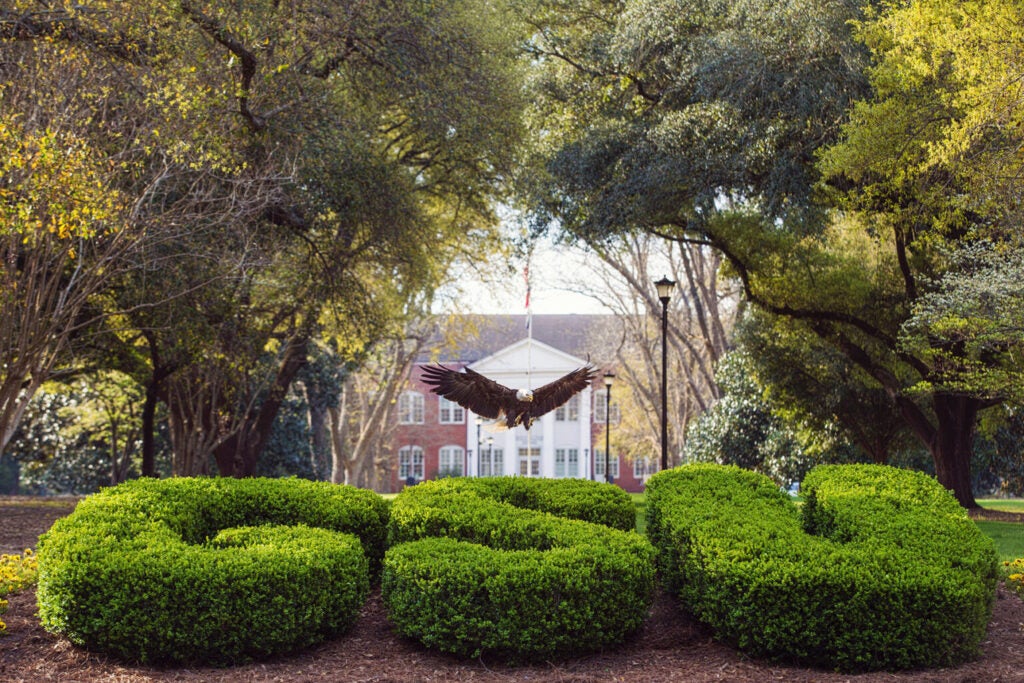
Freedom, Georgia Southern University’s beloved bald eagle and former live mascot, served as a powerful ambassador for wildlife conservation, education, and university pride for more than two decades. Rescued as a nestling in Maitland, Florida, Freedom suffered a permanent beak injury that made returning to the wild impossible. In 2004, with permission from the U.S. Fish and Wildlife Service, he was entrusted to Georgia Southern University and became a resident of the Center for Wildlife Education and Lamar Q Ball, Jr. Raptor Center.
Throughout his lifetime, Freedom soared not only in spirit but often in flight—making appearances at home football games, university commencements, and community events across Georgia and beyond. He flew before packed stadiums at Allen E. Paulson Stadium, stood proudly at Savannah’s St. Patrick’s Day Parade, and represented Georgia Southern at hundreds of ceremonies, educational demonstrations, and outreach programs. As the University’s live mascot, Freedom embodied the values of strength, resilience, and unity that define Eagle Nation.
Beyond the public eye, Freedom played a central role in educating thousands of school children and visitors about raptor biology, wildlife conservation, and the importance of environmental stewardship. He inspired countless individuals—young and old—to care about the natural world and served as a living symbol of the University’s commitment to hands-on learning and public service.
Freedom passed away in 2025, leaving behind a legacy that continues to shape the mission of the Wildlife Center and the spirit of Georgia Southern University. His memory lives on in the lives he touched, the lessons he taught, and the traditions he helped build. Plans to honor Freedom’s legacy are being planned by the University.
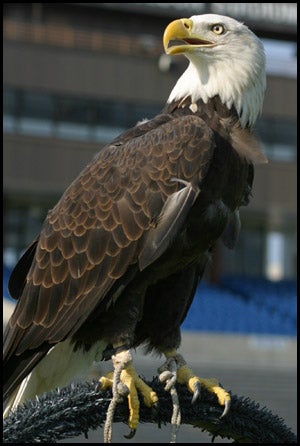
In the United States Government’s effort to save the Bald Eagle, it initiated an arduous recovery plan. The bird pictured was taken as an egg from a nest site in the Florida Everglades by the U.S. Fish & Wildlife Service special agents. Before you become overly alarmed, because of the long breeding season in Florida, the parent birds immediately laid additional eggs and therefore this activity did not negatively impact the local population. Once taken from the nest, these soldiers of stewardship quickly placed the cherished eggs in a warmed box and made the long departure for the Sutton Research Center in Bartlesville, Oklahoma. Given a safe arrival, the eggs were quickly whisked to the Research Center where the incubation period continued uninterrupted.
After a total of 35 days, Glory completed the most difficult task of introducing herself to the world. The process of breaking out of the shell is called “piping.” It is hugely taxing and many birds do not succeed. However, with a fighting spirit, Glory made her way into the world.
So small that she could fit in the palm of your hand, and without the benefit of wild parents, the job of caring for this young eaglet was in the hands of man. Critical in the first 25 days is the process of “species identity.” Like the television documentaries with geese and whooping cranes, young fowl will identify themselves by imprinting to the first objects they see during this critical period of development. To ensure that Glory would know herself to be an eagle, the human caretakers meticulously fed this pint-sized raptor by use of an eagle puppet. In addition, and at the appropriate age, Glory was coupled with other eagles of similar age. Throughout the rearing process, there was no association or knowledge of the efforts being made on her behalf by man.
Like all birds capable of flight, her growth was extraordinary. In little more than 60 days she went from a bird that could fit in the palm of your hand to the size that she is before you. She was now ready to make introduction into the wild. Through a coordinated effort overseen by the Federal Government it was determined that she, along with many others, would be released in Gulf Shores, Mississippi. The science revealed that introducing many eagles of a similar age at the same time would give the species a greater chance of finding a mate when reaching sexual maturity.
At the nest site, man’s helping hand continued. Glory, along with the others, was contained for several weeks atop of a release tower… also known as a “hack site.” The human guardians (hack site attendants) kept careful vigil and fed these birds during this critical phase. Though imprisoned, these young eagles were for the first time allowed to view their vast surroundings.
One fateful day, the enclosure was opened and freedom was before her. As she honed her prowess as North America’s largest and most powerful predatory bird, food continued to be delivered by her human guardian. As in nature’s plan and to the joy and sadness of her guardians, one day she failed to reappear. She was now free and on her own, as a champion of her species. Though she was unaware, Glory bore great expectations on her wings. It was hoped that she would reach sexual maturity, which is noted by the white head and white tail that is so ingrained in the minds of the American public.
We know all these facts because the only thing that separated her from her more wild counterparts was the presence of a band around her leg and a small plastic tag on her wing. One can only wonder what her life must have been like…from the time that she left the hack site until she next encountered man who had served as her guardian throughout the process.
Ironic it is that man was what would break Glory’s spirits. What follows is sketchy but this much we know. She was likely in migration and traveling over Georgia when she was shot down from the sky. The X-rays clearly showed the presence of lead pellets from a shotgun blast. Considerable efforts were made by a veterinarian to salvage the wing, but to no avail. Ultimately, and at the hands of man, half of the right wing required amputation.
Records have indicated that eagles are able to live as long as 40 years, making them one of the longest lived species of any bird. The loss of Glory in the wild affected all of her progeny that could have followed. Glory is proof of man’s great capacity for change. Today she is remembered as an ambassador, not only of her species or Georgia Southern University, but of this great nation!
The bald eagle became the official emblem of the United States in 1782. Part of the reason that it was selected is because the Bald Eagle can only be found in North America. Ben Franklin was not in favor of having the Bald Eagle as the national symbol. As a naturalist, Ben Franklin realized that bald eagles were prone to scavengers and piracy. Eagles steal the spoils of its lesser cousin, the Osprey. Franklin felt that these attributes were not worthy of being represented as the national symbol. On the contrary, however, these traits give testimony to this noble creature’s ability to adapt, and above all else, ability to survive (like our great country). Through an act of Congress, the bald eagle became the national symbol…despite Ben Franklin’s wishes. Georgia Southern University adopted the eagle as its symbol in 1960.
Like the peregrine falcon, brown pelican, and other species, our national symbol suffered a great fall due to pesticides (DDT) employed by man during the 1950 — 60’s. Ultimately our emblem found itself on the endangered species list. By 1970, there was only one known successful nesting pair in Georgia. However, through a concerted effort of the State and Federal government, use of the pesticides ceased and the bird showed its resilience in a great recovery effort. In 2007 it came off of the federal list of threatened and endangered species. In 2017 surveys documented 218 nests in Georgia with 142 of those being successful.
Eagles can be found around larger lakes and along the Georgia coast. The six coastal counties in Georgia had 71 occupied nest territories in the year 2020. During the fall and winter, the population rises due to the arrival of migrating eagles that over-winter in Georgia. An “eagle sighting” is memorable, and now a more frequent experience for Georgians across the state.
The bald eagle became the official emblem of the United States in 1782. Part of the reason that it was selected is because the Bald Eagle can only be found in North America. Ben Franklin was not in favor of having the Bald Eagle as the national symbol. As a naturalist, Ben Franklin realized that bald eagles were prone to scavengers and piracy. Eagles steal the spoils of its lesser cousin, the Osprey. Franklin felt that these attributes were not worthy of being represented as the national symbol. On the contrary, however, these traits give testimony to this noble creature’s ability to adapt, and above all else, ability to survive (like our great country). Through an act of Congress, the bald eagle became the national symbol…despite Ben Franklin’s wishes. Georgia Southern University adopted the eagle as its symbol in 1960.
Raptors
Raptors, also known as birds of prey, are a diverse and fascinating group of birds which have all adapted to a life of eating meat. Raptors include Eagles, Hawks, Owls, Falcons and Vultures and within each group there can be found a great deal of variety in form and behavior. Though incredibly diverse, all of these raptors will possess three important characteristics; keen eyesight for spotting prey, powerful curved talons for capturing and gripping prey and a curved beak for tearing food into smaller pieces. Raptors play an important role in the environment as key predators and scavengers and are some of the most important natural vermin control mechanisms. Here at the Center for Wildlife Education we have a vast collection of birds, from the tiniest of Screech Owls to large and majestic Bald Eagles. Here you will find a sampling of our raptors and more await you at your visit to The Center for Wildlife Education!
Please note: All of our birds are unable to be released into the wild due to injuries or behavioral handicaps.
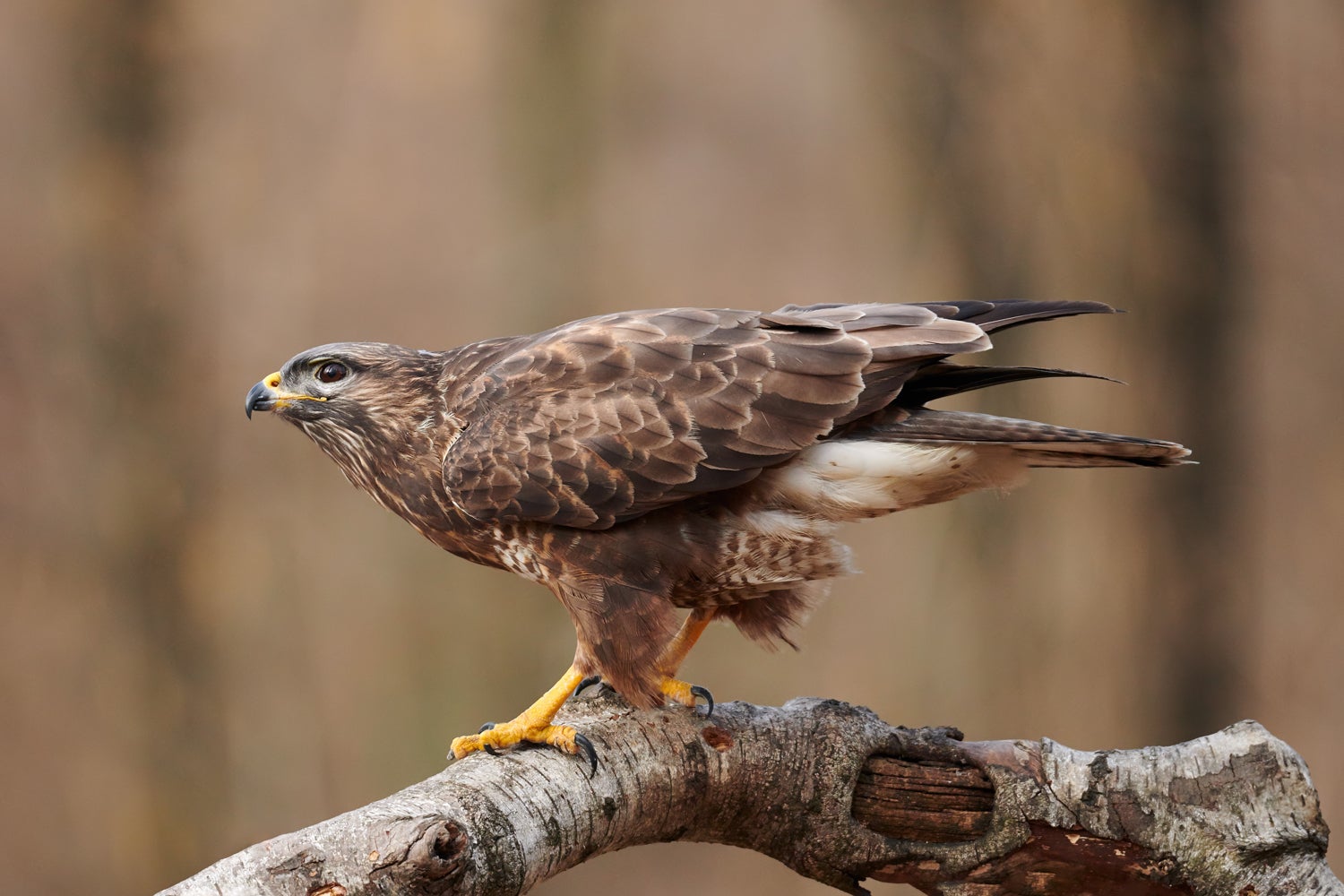
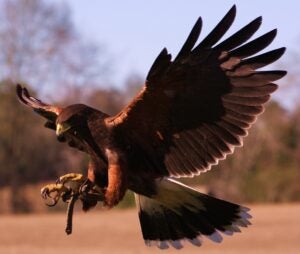
Hawks are the archetypical raptor. They inhabit many habitats, from arctic tundra to arid deserts and dense tropical forest. They are typically active during the day and prey upon a variety of animals. Locally, Red-Tailed Hawks are a common sight along the roadside and at the forest’s edge, where they hunt for mice, rats, squirrels and rabbits. They have very keen vision and generally wait atop a high perch for signs of prey on their area. Then, with great power and precision, they drop upon their prey with razor-sharp talons.
Hawks at the Center
The Raptor Walkway features some of Georgia’s native hawks in their natural habitats, including the Red Tailed Hawk and the Red Shouldered Hawk. In our raptor programs, you may be able to see other species such as the Harris Hawk, or a Broad-winged hawk.
In our flight show, be prepared to be amazed by the flights of our trained Hawks. Our show includes Red-Tailed Hawks, Red-Shouldered Hawks and one of our real stars, the Harris Hawk. This bird is a real character and always brings his own brand of humor and fun to the shows. He’s used to being in the limelight though; he was once a mascot for the Atlanta Hawks!
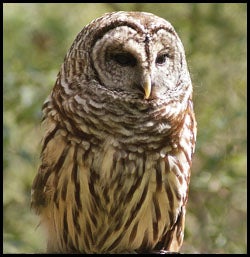
Few birds have mastered the task of living at night, and none nearly as well as the owls. Long considered a creature worthy of legends and myths, owls have fascinated humanity for years. Their piercing, enormous eyes are both beautiful and vital to their role as a nighttime predator. Owl night sight is amongst the best, allowing owls to operate in very little light. Their hearing is also amazing, with some owls able to hear sounds as faint as a mouse’s heart beat buried under snow. Though long hailed as “The Wise Old Owl”, owls are actually not the biggest thinkers of the bird world. Nevertheless, owls are amazing predators and their mastery of the night is worthy of awe and adoration
Owls at the Center
The Center for Wildlife Education’s raptor center is home to many species of owls, including native species and those from overseas. On our raptor walkway, you’ll encounter Barred Owls, Great Horned Owls and Eastern Screech Owls. Be sure to check out our Barn Owl Barn where you can get up close and personal with the species most commonly found living amongst humans worldwide.
Our collection includes several flight-capable owls as well, including a Barred Owl, Great Horned Owl and a pair of majestic Eurasian Eagle Owls. In our flight show program, these beautiful birds will demonstrate some of their amazing adaptations to life at night, including silent flight and their incredible mobile necks.
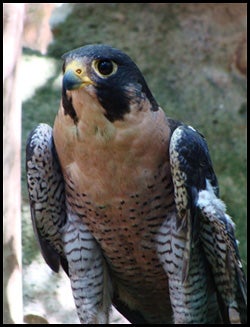
Falcons are amongst the most agile of birds. Instead of relying on strength, they depend upon complex aerial maneuvers. Generally, Falcons are smaller than hawks and have smaller beaks and talons. Their wings are sharply pointed and narrow to provide them with the maneuverability they need to capture prey. Forest falcons will often pursue their prey, even into deep cover, narrowly avoiding tree trunks, branches and brambles where larger, clumsier birds could not venture. In the mountains and plains, Peregrine falcons employ a very extreme hunting method known as a stoop. The Falcon first spots its prey from a high altitude, often a duck or pigeon. Then, it plummets from great height, accelerating with carefully timed wing beats, reaching speeds of up to 180 miles an hour. When it reaches its quarry, instead of seizing it with its talons like other birds of prey, it balls up its talons and hits it’s prey like a feathered cannonball!
Falcons at the Center
One of the first birds you will find on our raptor center walkway is the American kestrel. One might mistake this little falcon for a songbird, because he is no larger than a robin and colored in beautiful slate grey and rich orange with prominent black markings. However, this little falcon is a skilled predator, using advanced UV vision and skillful hovering to capture mice, voles and other small rodents. You’ll also find our peregrine falcons in the mountain habitat. Get an up close view of these amazing predators that were nearly wiped to extinction in America due to the use of DDT. However, the species has made a remarkable recovery thanks to the banning of DDT and reintroduction. You might even see some of these birds living amongst the skyscrapers in Atlanta!
Reptiles
Reptiles have scales, “cold blood”, and eggs with leathery shells. The group is extremely varied, including snakes, lizards, turtles, and crocodilians. Reptiles have adapted to fill nearly every ecological niche and can be found all over the world, in tropical forests, arid deserts and even in the ocean depths! Reptiles eat a wide variety of different foods. Some reptiles are herbivores and munch on grasses, fruits and vegetables. Other reptiles prefer meat and bugs.
Over the years reptiles have developed many ways to avoid predators, Tortoises and turtles have hard shells for protection. Some lizards have developed strong legs and claws for climbing; others have the ability to run on top of water. Some reptiles are large predators and have adapted a wide variety of ways to capture their food. American Alligators have developed eyes on the top of their head so they can hide in the water and still see their prey. Reptiles also come in a wide variety of sizes. Some of the largest reptiles today can weigh over 1500 pounds or be up to thirty feet long. There are also reptiles so tiny they can fit on a quarter!
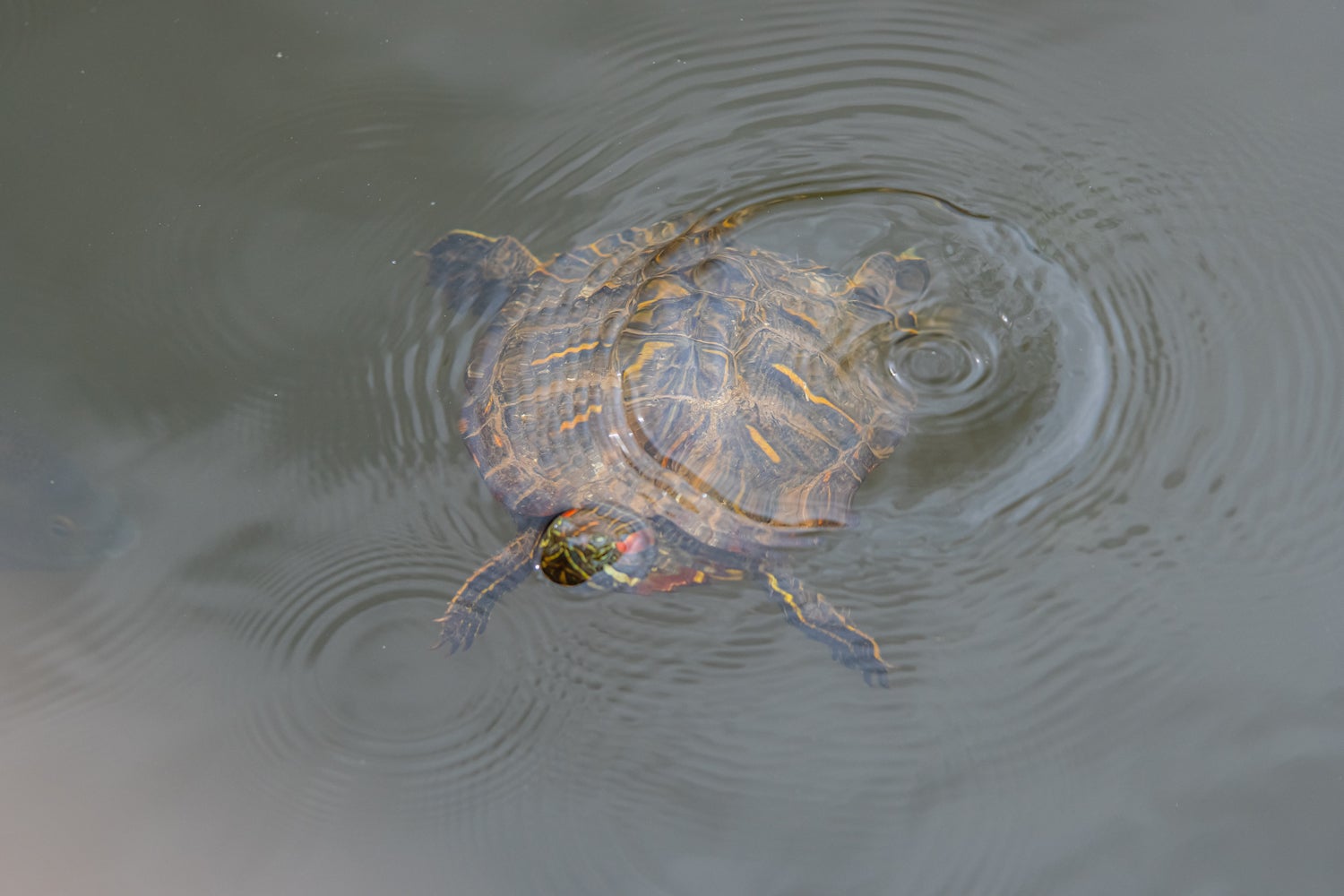
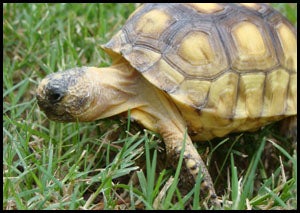
Georgia is home to a wide variety of reptiles. At least eighty-four species are native to the state, with a few introduced species as well. The Georgia coastline is an important breeding ground for some species of threatened and endangered sea turtles and other species frequent our coastal waters. The state is also home to a mind-boggling variety of snakes and turtles, and contains key habitats for many threatened and endangered species including the Eastern Indigo snake and Gopher tortoise.
Gopher tortoises are the state reptile in Georgia and a federally threatened species. Some grow to weight up to fifteen pounds and can live up to a hundred years. They are amazing burrowers, with sturdy, shovel-like front legs and powerful muscles to plow through sand and soil. They will dig burrows that range from just six feet long to one recorded case of fifty feet long! Gopher Tortoises are especially important in their environment because they are an ecosystem engineer. Their burrows are not only a home to the tortoises, but also a variety of snakes, mammals, birds, amphibians and invertebrates. It’s estimated that around 250 species of animal use gopher tortoise burrows at some point!
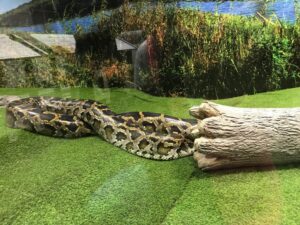
The Wildlife Center possess many amazing reptiles. Everything from tiny anoles, common on fences and in gardens, to a Burmese Python! Our main building is full to the brim of every manner of native reptile, including a gator tank and more snakes than you could shake a stick at.
In our reptile show, prepare to get up close and personal with our collection of both native and exotic species of reptiles. This part of the show is definitely hands-on! Our guests will have the opportunity to interact with a wide variety of snakes, lizards, alligators and turtles and learn about their incredible adaptations and stories. Our roster is constantly changing, so you never know what you’ll see at the reptile show!
Our Down to Earth Encounter is a great interactive display where you can discover many reptiles native to our area. Search through the “underbrush” to find everything from skinks to venomous snakes (all safely behind glass). Take some time to enter the turtle yard, where a dozen Eastern Box Turtles can be found, along with a Gopher Tortoise and an actual gopher tortoise burrow!
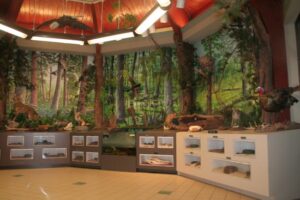
Amphibians
Amphibians are an ancient group of animals older than the dinosaurs. The class includes frogs, toads, salamanders, and caecilians. They were the first vertebrates (animals with backbones) to inhabit the land, but remained tied to water in order to lay their eggs. Amphibian literally means “two lives” which refers to the tendency for most amphibians to have an aquatic larval stage before metamorphosing into an adult form, usually terrestrial. Amphibians usually have lungs, but also have the ability to breathe through their skin, which needs to stay moist, further tying them to water. Some species have returned to a fully aquatic life, such as newts and sirens, but the vast majority of amphibians spend their adult lives mostly on land. So far there are approximately 8,000 species of amphibians described, with more being identified every year.
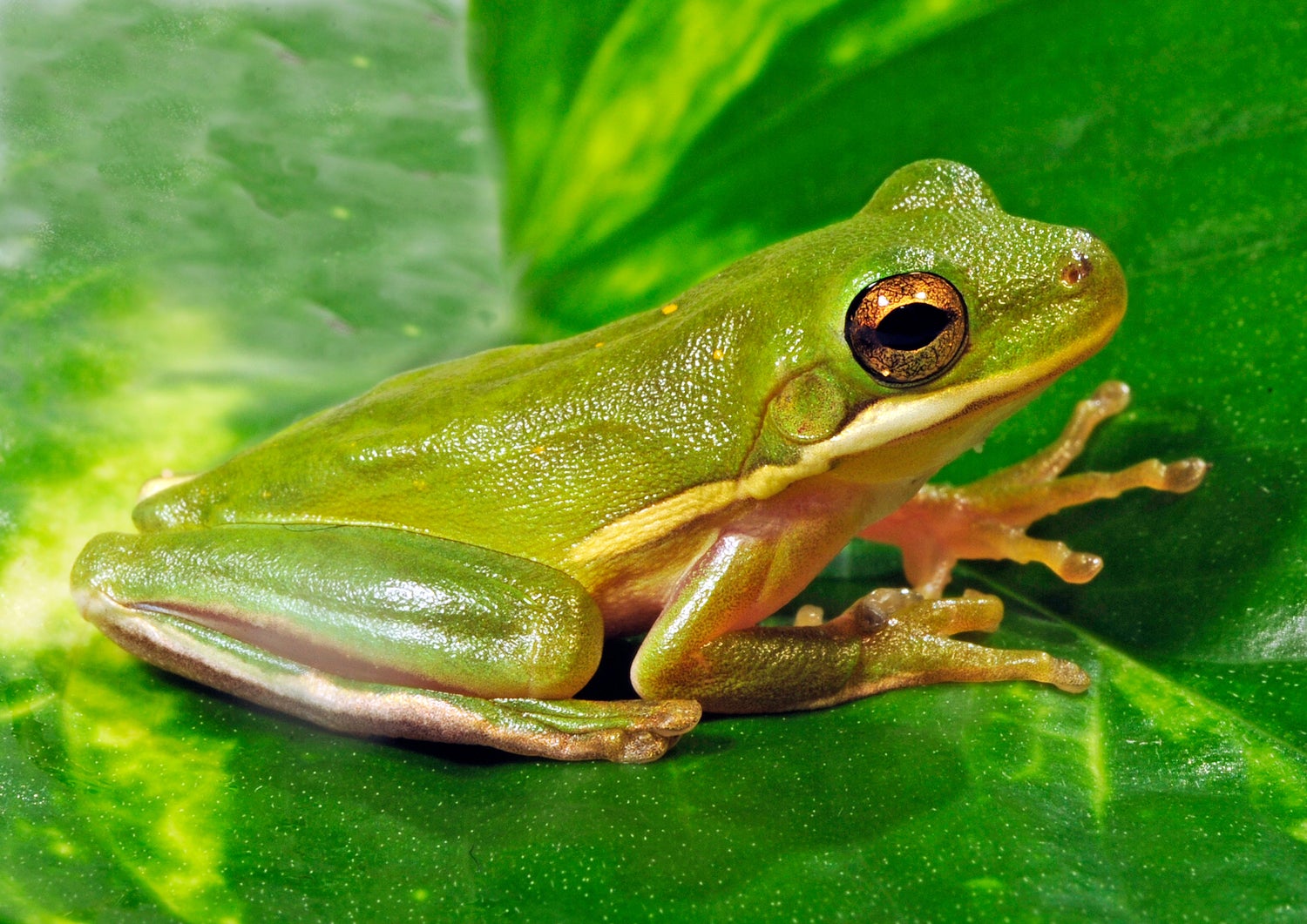
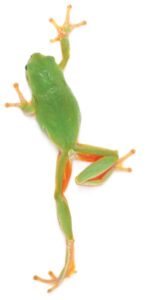
The State of Georgia is home to 32 different species of frogs and toads and 80 species of amphibians overall. Georgia’s climate and numerous wetlands serve as an ideal habitat for most species of southeastern amphibians. Statesboro’s warm, wet springs and summers attract a great deal of frogs and toads which delight residents with a symphony of calls, from the high whistles of the ornate chorus frog to the low, booming “jug-o-rum” call of the bullfrog. With recent discoveries, Georgia is now home to more species of salamanders than any other place in the world, including unusual lungless salamanders and the largest salamander in America, the hellbender, which inhabits dark rivers and streams in north Georgia.
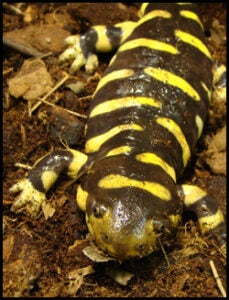
Amphibians around the world are currently at great risk. They are beset by many factors that have put their numbers in steep decline. Habitat loss and pollution has set many species towards extinction. Currently, scientists have identified over 1,800 species of amphibians endangered or threatened with extinction, including some species in Georgia. Habitat loss and fragmentation has caused many species to dwindle, and without enough territory, amphibians cannot maintain large enough populations to protect against changes in their environment. Pollution has also been a huge issue, because amphibians take in air and water through their skin, any toxins in their environment are quickly taken into their bodies. The greatest risk recently has been the explosion of a fungus worldwide called chytrid that is fatal to amphibians. This fungus is decimating many species of frogs, and is extremely difficult to treat and prevent. Scientists worldwide are working feverishly to control its spread, but new areas are being affected at an alarming rate. The chytrid fungus has even been found in Georgia.
The Georgia Southern Center for Wildlife Education houses a variety of both native and exotic amphibians. In our main building you’ll discover the native Southern Toad, a common visitor to local gardens and lawns, as well as the invasive Cane Toad.
In our Wildlife programs, get up close and personal with different species of amphibians and learn all about their biology, ecological role and the challenges facing them. Our line-up is always changing, so come back often to see what we have in store for you!
Waterfowl & Wading Birds
Ducks have played a role in human life for centuries. They are a delight to behold, exhibiting a wide variety of colors, patterns, shapes and sizes. They also have an endearing, humorous nature, their endless vocabulary of whistles, hoots, quacks and wheezes, their ungainly waddling on land and the up-ending dives of some species. Many of America’s favorite fictional characters have been ducks, from Donald to Daffy, and they’ve even found their way into the mascot business. Few can say they haven’t taken the time to go to a local pond and feed the ducks, simply because it made them smile.
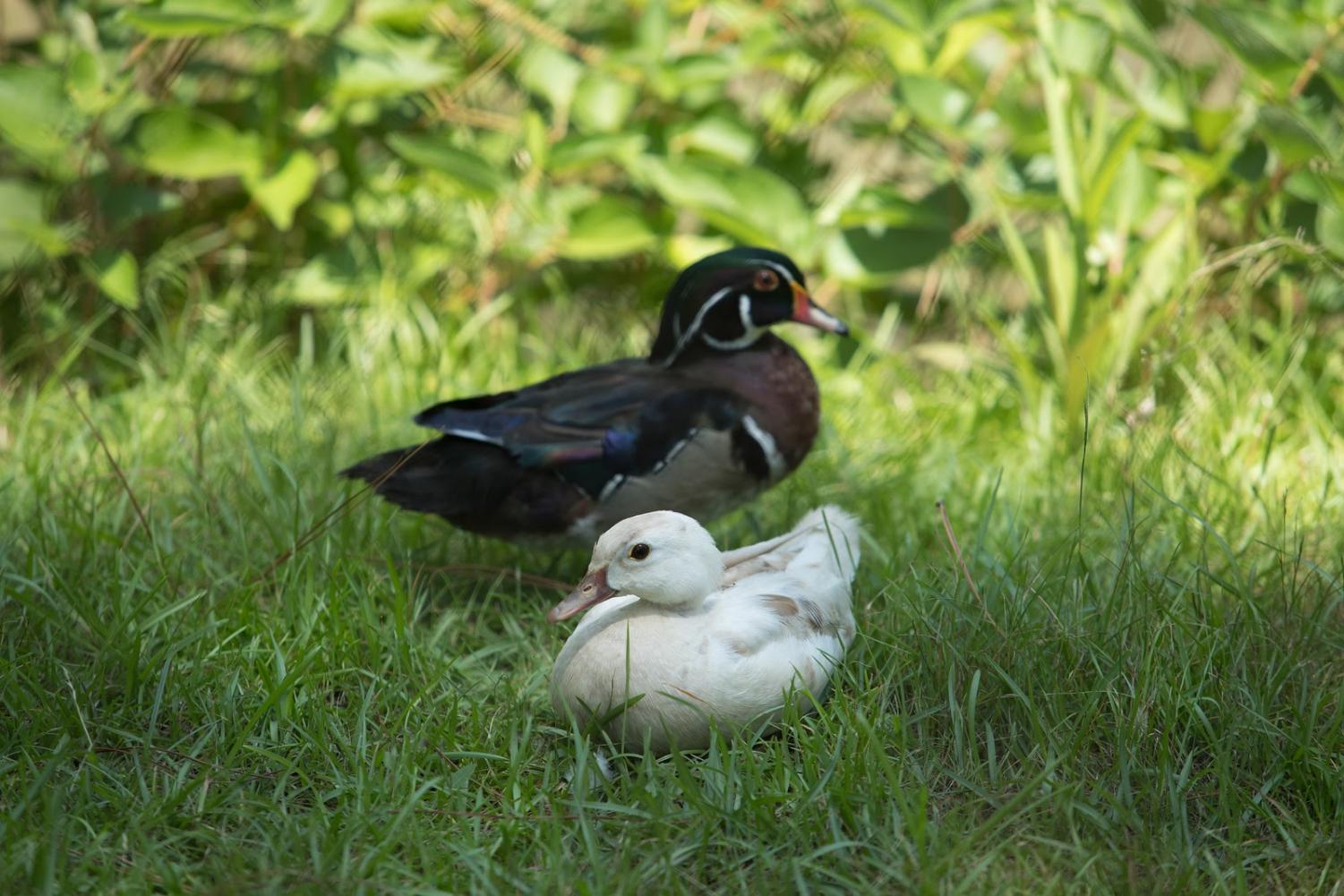
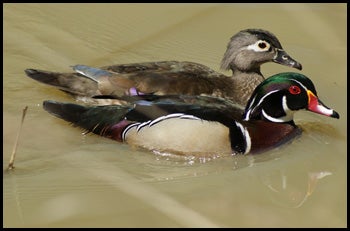
Ducks have also had a long standing role in agriculture and commerce. They have long been hunted and domesticated for their feathers, meat and eggs. While hunting practices at one time were uncontrolled and dangerous, driving many species to the brink of extinction, modern hunting groups have been at the forefront of waterfowl conservation, protecting game populations to ensure the future generations can enjoy hunting. The Wood Duck is an excellent example. At the turn of the twentieth century, the Wood Duck’s numbers had dropped dramatically, putting it at risk of extinction. This particular duck has been considered by some to be the most beautiful of the ducks, and a popular hunting quarry for both meat and for its beautiful feathers. It was decided that a limit must be placed on seasonal takes and steps must be taken to protect the ducks’ habitat and provide extra nesting boxes so that the population could strengthen. Through the combined effort of government, law enforcement agencies, land owners and hunting groups the Wood Duck is now once again a common species.
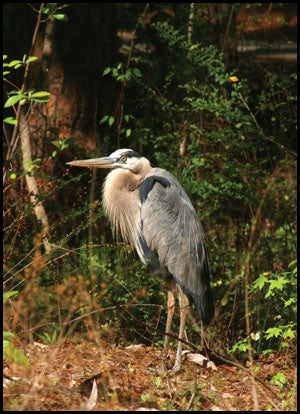
Wading birds include the storks, herons, egrets, bitterns and ibises. They are typically long-legged, long necked birds which hunt in shallow water for fish, frogs and invertebrates. They range in size from the small Green Heron, which is only about the size of a crow, to the Marabou Stork, which is tied with the Andean Condor for the largest wingspan of any bird. The Stork has long been tied to folklore in many countries, ranging from harbingers of luck and deliverers of babies, ferrying of good souls to happier places to being ill omens. They are impressive in flight, with broad, soaring wings and long, graceful necks and their careful, methodical gait through the water as they hunt is both eerie and majestic.
Wading birds are carnivores, eating a wide variety of fish, frogs, shellfish and aquatic bugs. They employ many different feeding tactics, from simply snapping down on their prey with powerful bills, to spearing unsuspecting prey; they have even been observed using a type of “fishing lure”, by dropping a bit of bait or a feather onto the water’s surface in order to draw unsuspecting fish to them. Because of the many different ways they hunt, it is believed that wading birds, Herons especially, are amongst the smartest birds.
The Waterfowl Pond is the Wildlife Center’s newest addition. The 15,000+ square foot aviary is home to over 100 different ducks representing 15 different species that are found in the state of Georgia. Visitors will see Wood Ducks, Hooded Mergansers, Redheads, Ruddy Ducks, Blue-winged and Green-winged Teals plus many more species. This makes the Wildlife Center home to the largest collection of native waterfowl in the state of Georgia and one of the largest walk-in aviaries in the region.
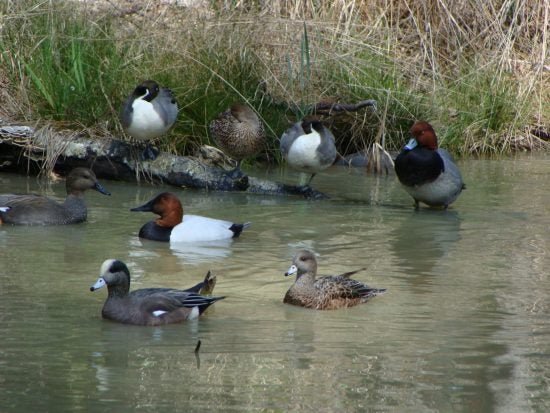
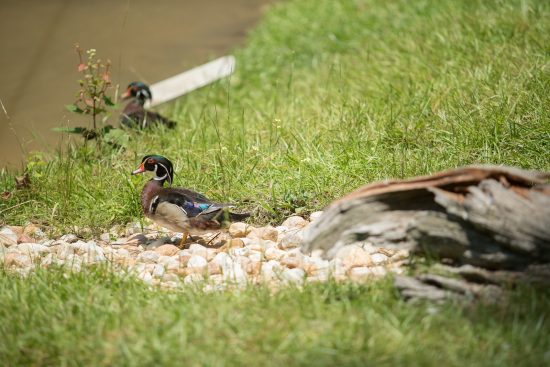
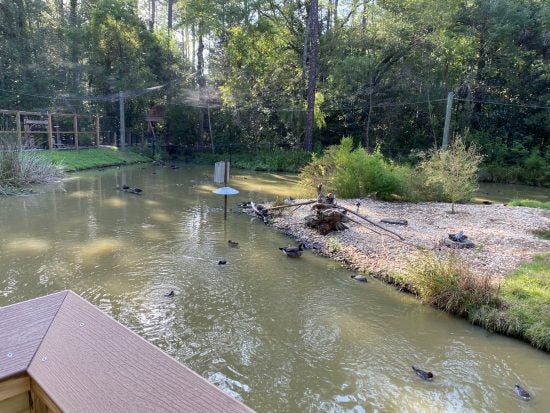
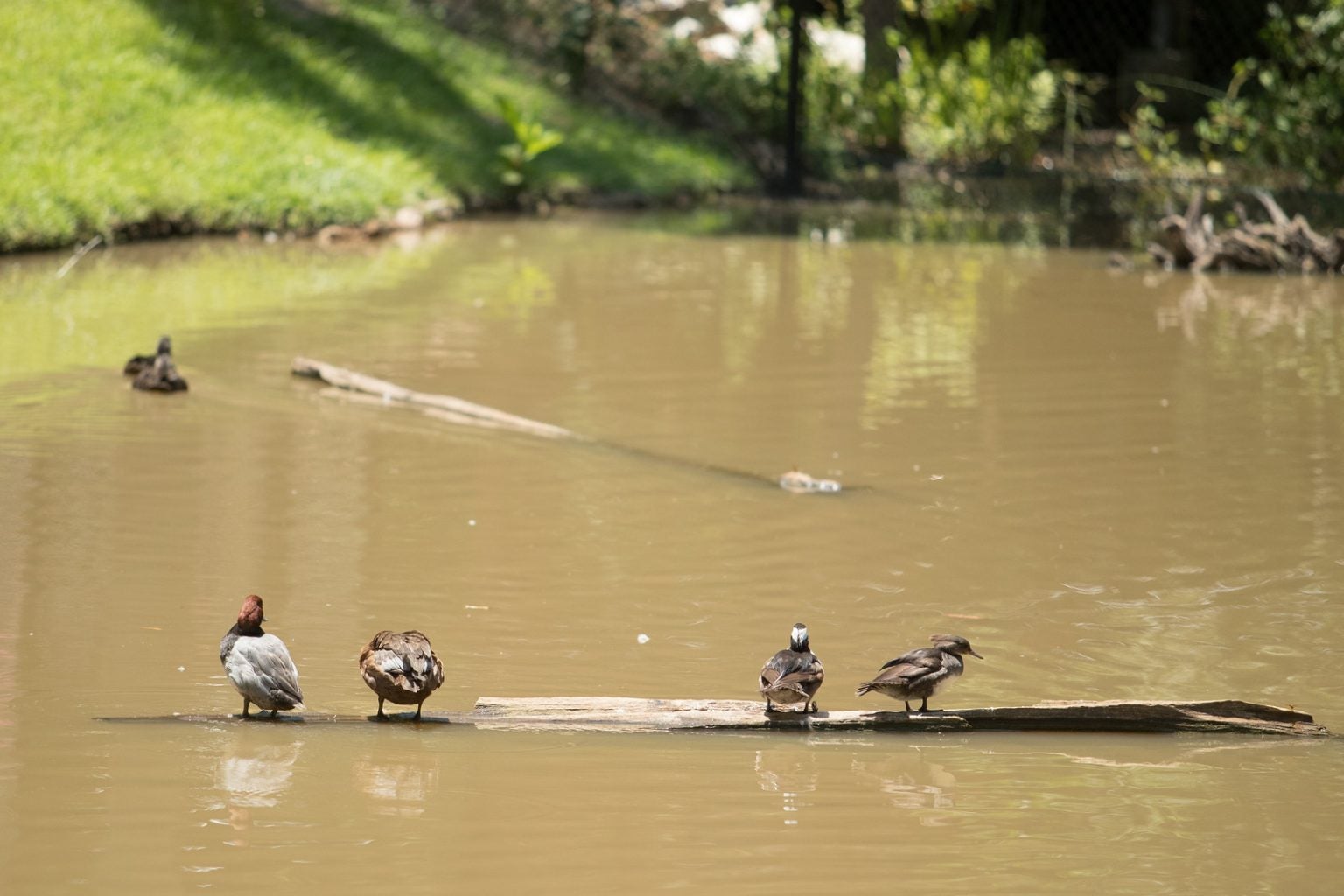
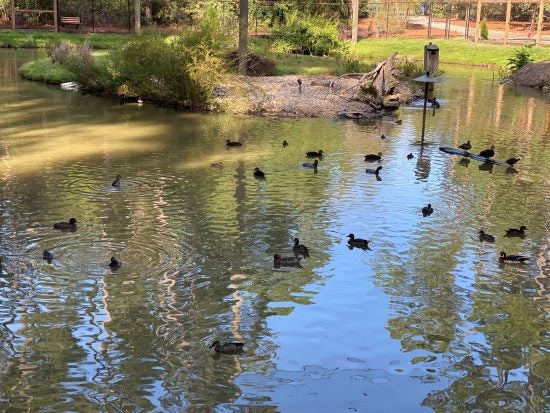
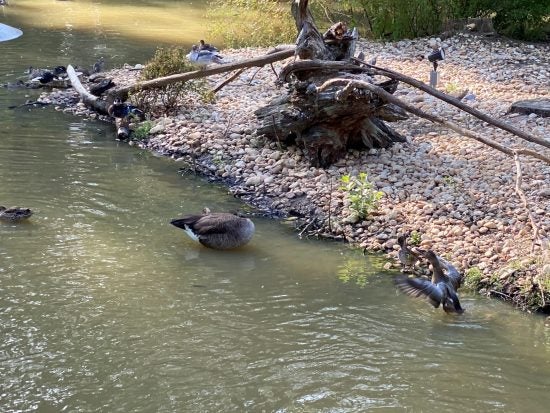
Mammals
Mammals are warm blooded animals with hair or fur that provide milk for their young. They include some of the most familiar and loved of all animals, from bunny rabbits to tigers. Mammals thrive in all climates, from the driest of deserts to the coldest, deepest of seas.
